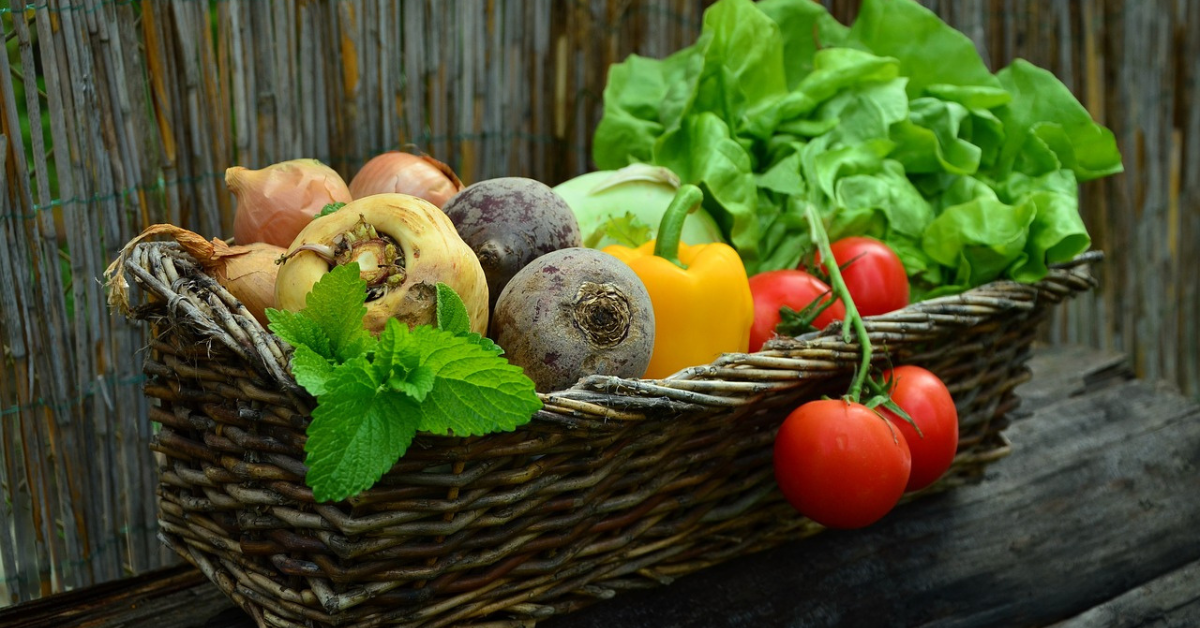
The Benefits of Teaching Kids About Sustainable Eating

*Collaborative Post
Sustainable eating may soon become standard practice in many areas of the world, so it’s important to introduce the concept into our kids’ education as soon as possible.
By teaching our young ones where their food comes from and the benefits of choosing healthy options over attractive, sugary ones, we’re setting them up for lifelong wellness while also helping the environment.
Kids who understand sustainable practices develop better eating habits, appreciate fresh foods more, and reduce waste. Plus, eco-conscious parenting is gaining momentum as families look to make responsible choices that support global sustainability.
So, if your little one is ready to learn about food and sustainable eating, here are a few things to consider.
Where Food Comes From
Understanding where food comes from helps children connect to what they eat, fostering appreciation and healthier choices.
One way to do so is by taking them to the actual food source, like a local farm or farmers’ market, where they can see how vegetables grow and meet the people who cultivate them.
Many schools have embraced this concept with garden projects, allowing students to plant, nurture, and harvest their own crops. For instance, some urban schools use rooftop gardens. These serve both an educational purpose and as a food source for their cafeterias, where the kids get to taste the produce they grow.
These hands-on experiences teach kids about sustainable practices early on while making learning fun!
Choosing Healthy Options
A healthy diet is essential for your child’s growth and development. And yet, kids are not easily convinced that a carrot is better than a lollipop.
Still, all you need are a few clever strategies, and they’ll soon be happy to munch on the carrot without too much effort on your part.
One way to achieve this is to turn mealtime into a game. Create colorful plates with fruits and veggies arranged in fun shapes or faces to make healthy eating visually appealing and enjoyable.
Also, let your kids help in the kitchen—they can wash vegetables, stir cold sauces, or pick the veggies they like best. Food is more delicious when you’ve helped prepare it!
Lastly, make sure to lead by example. Kids mimic adults, so if they see you savoring those greens, they’ll be curious enough to try them.
Extra tip: For those days and weeks when time isn’t on your side, you can use a meal kit delivery service that offers kid-friendly options. For instance, you can have a week’s worth of healthy, no-stress, low-calorie meals with Hellofresh, whose menu is geared toward families with kids.
Environmental Impact Awareness
Sustainable eating plays a huge role in reducing our carbon footprints and cutting down waste. Think of it as recycling but with our food habits.
When you choose locally sourced produce or plant-based meals, you’re lowering the energy used for transportation and production—just as recycling reduces the need for new materials.
Plus, when you avoid processed foods, you also cut back on packaging waste and help reduce pollution from manufacturing processes. Additionally, by planning meals thoughtfully, you can significantly reduce food waste—using leftovers creatively or composting scraps helps return nutrients to the earth rather than piling up in landfills. There are so many great vegetarian and vegan options out there now from Quorn to Linda McCartney, Beyond Meat, supermarket own brands and phat buns now offer vegetarian burgers too.
Every small action counts: when families adopt these sustainable practices consistently, they’re contributing to a healthier planet while enjoying fresh, nutritious foods.
Practical Tips for Parents
Want to help your kids understand sustainable eating? Here are some fun and easy tips:
1. Involve Kids in Meal Planning
Make meal planning an adventure! Let them pick recipes with you, focusing on seasonal and local ingredients. Take them grocery shopping and explain why choosing certain items supports sustainability.
2. Explore New Foods
Turn trying new foods into a game. Challenge your kids to taste a different fruit or vegetable each week, especially those that are in season. Explain how eating what’s currently available reduces the need for long-distance shipping, helping the environment.
3. Read Labels Together
Use grocery trips as teachable moments by showing your kids how to read nutritional labels on packaged foods. Explain what each section means and guide them towards making healthier choices based on this knowledge.
These small steps can make learning about sustainable eating both educational and enjoyable!
Wrap Up
Teaching kids about sustainable eating is a gift that keeps on giving. By showing them how food is grown and prepared, what it means to eat healthy, and the environmental impact of bad food practices, you’re nurturing eco-conscious minds.
Start small and make it fun; your efforts will cultivate a deeper appreciation for the food they eat and its impact on the world. Embrace these practices at home today, ensuring your children grow up to be mindful eaters who care about their health and our planet’s future!
*This is a collaborative post. For further information please refer to my disclosure page.




